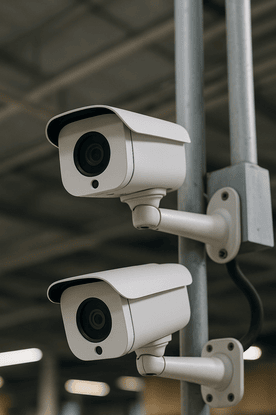
Facial recognition technology is showing up everywhere—from unlocking smartphones to airport security. Now, it’s making its way into healthcare facilities as part of broader hospital security systems and access control solutions.
The promise is clear: faster identification, stronger security, and streamlined patient experiences. But in a hospital environment where privacy is paramount, facial recognition raises critical questions about HIPAA compliance, patient trust, and ethical use.
So, is facial recognition in healthcare the future of security—or a step too far? Let’s take a closer look.
l
l
Why Healthcare Facilities Are Exploring Facial Recognition
Hospitals are complex, high-traffic environments with a wide range of people coming and going daily: patients, visitors, staff, contractors, and vendors. Traditional security tools—badges, visitor passes, or manual check-ins—can be slow or vulnerable to misuse.
Facial recognition promises:
-
Streamlined access control – Quickly granting entry to authorized staff without cards or fobs.
-
Faster patient check-ins – Reducing paperwork and improving patient flow in busy departments.
-
Enhanced visitor management – Flagging banned individuals or high-risk situations at entry points.
-
Layered security – Integrating with surveillance to identify persons of interest in real time.
For facilities running 24/7, shaving seconds off verification and improving monitoring accuracy can be a game-changer.
l
l
The Pitfalls: Privacy, Trust, and Compliance
As attractive as it sounds, facial recognition is not without risks—especially in healthcare, where patient privacy is legally protected and deeply personal.
1. HIPAA and Data Protection
Facial images are considered biometric data. If tied to patient health information, they may fall under HIPAA protections. Hospitals must ensure:
-
Encryption of stored biometric data
-
Strict limits on who can access the system
-
Audit trails showing when and how images are used
2. False Positives and Negatives
No system is perfect. Misidentification can cause security delays for staff or, worse, allow unauthorized individuals access. In a hospital setting, mistakes can have real consequences.
3. Patient and Visitor Trust
Not everyone is comfortable with being constantly scanned. Hospitals risk alienating patients or visitors if the system feels invasive. Transparency is essential.
4. Regulatory Gray Areas
Unlike airports or law enforcement, hospitals don’t yet have widely established guidelines for facial recognition. This puts the burden on administrators to set clear policies.
l
l
Best Practices for Responsible Use
If a healthcare facility is considering facial recognition, here are best practices to make it secure and ethical:
1. Use It for High-Security Areas First
Start with restricted spaces like pharmacies, data centers, or NICUs where risks are highest. Limit use in public-facing areas until policies and safeguards are established.
2. Make It Voluntary for Patients
For patient check-ins, offer facial recognition as an opt-in tool rather than a requirement. Give patients alternatives to maintain trust.
3. Prioritize Transparency
Post clear signage and educate staff, patients, and visitors about how data is collected, stored, and protected.
4. Integrate With Existing Security Systems
Facial recognition should not operate in isolation. Link it with access control, visitor management, and HIPAA-compliant surveillance for a comprehensive strategy.
5. Audit Regularly
Establish policies for retention and deletion of biometric data and review systems frequently for accuracy and compliance.
l
l
Real-World Example: A Balanced Approach
One large healthcare network recently piloted facial recognition for staff access to surgical suites. Staff appreciated the speed—no fumbling with badges or gloves before entering sterile areas. Patients, however, voiced concerns about being scanned. The hospital responded by limiting use to staff-only areas and publishing a privacy statement outlining exactly how data was secured.
The result? Stronger security without undermining patient trust.
l
l
Conclusion
Facial recognition in healthcare has real promise: faster identification, improved security, and streamlined workflows. But without thoughtful implementation, it risks violating privacy, damaging trust, and creating compliance headaches.
The future of facial recognition in hospitals won’t be about replacing existing systems, but augmenting them carefully where benefits outweigh risks. By focusing on transparency, compliance, and limited rollout, hospitals can explore the technology responsibly.
Talk to SSP about building a security strategy that balances innovation with patient trust—because smarter doesn’t have to mean less human.


